Sensors already equip a range of tools to enhance monitoring capacity for conservation. Some of the higher bandwidth technologies, like camera traps and acoustic monitoring systems, have been essential elements of the conservation toolkit for decades, and thus have enough users that we've created dedicated WILDLABS groups to address them. But a whole range of lower bandwidth sensors beyond these core technologies are being increasingly integrated into conservation monitoring systems, and offer rich new insights into the wildlife and ecosystems we're all working to protect. As with many technologies, cost and access have historically been challenges to the adoption of new sensors, but with low-cost and open-source solutions on the rise, we're excited to see what the future of this space holds.
Getting Started with Sensors:
- Watch Shah Selbe's Tech Tutors episode on scaling FieldKit, an open-source conservation sensor toolbox, from a project to a successful conservation tech product.
- Check out our Virtual Meetup about Low-Cost, Open-Source Solutions in conservation tech, including a talk by Alasdair Davies on the Arribada Initiative's work with thermal sensors in early warning systems.
- For a more in-depth introduction, watch the first video in our datalogger mini-series: Freaklabs: How do I get started with Arduino?
In this group, you'll meet others who are using and innovating diverse sensors in their work, discuss ways to make sensors more effective & accessible for conservationists, learn about what sensors are already helping us accomplish in the field, and have the opportunity to ask and answer questions. Join this group to get started!
Header image: Emma Vogel, University of Tromsø
Scaling biodiversity monitoring, using smart sensors and ai-pipelines

- 0 Resources
- 2 Discussions
- 10 Groups
- @ahmedjunaid
- | He/His
Zoologist, Ecologist, Herpetologist, Conservation Biologist





- 63 Resources
- 7 Discussions
- 26 Groups
La Trobe University
Zoologist & Conservation biologist
- 0 Resources
- 1 Discussions
- 5 Groups
- @frides238
- | She/her
Hi! I am Frida Ruiz, a current Mechanical Engineering undergraduate student very interested in habitat restoration & conservation. I am excited to connect with others and learn about technology applications within applied ecology & potential research opportunities

- 0 Resources
- 5 Discussions
- 13 Groups
- @Robincrocs
- | He/Him//El//Ele
Wildlife biologist, works with Caimans and Crocodiles
- 0 Resources
- 0 Discussions
- 15 Groups
- @StephODonnell
- | She / Her



- 193 Resources
- 676 Discussions
- 32 Groups
2023 Bachelor Degree Graduate from the College of African Wildlife Management, Mweka.

- 0 Resources
- 3 Discussions
- 14 Groups

- 0 Resources
- 7 Discussions
- 7 Groups
- @Rob_Appleby
- | He/him
Wild Spy
Whilst I love everything about WILDLABS and the conservation tech community I am mostly here for the badges!!





- 1 Resources
- 315 Discussions
- 11 Groups
I am a conservation technology advisor with New Zealand's Department of Conservation. I have experience in developing remote monitoring tech, sensors, remote comms and data management.
- 0 Resources
- 0 Discussions
- 15 Groups
- 0 Resources
- 6 Discussions
- 4 Groups
Aarhus University
Biologist and Research Technician working with ecosystem monitoring and research at Zackenberg Research Station in Greenland





- 19 Resources
- 270 Discussions
- 7 Groups
In this blog, Laure Joanny adds her perspectives to an ongoing discussion that we've been seeing in the community about conservation tech and it's relationship to e-waste. How do we tackle the challenge of battery waste...
3 May 2019
As a winner of the Human Wildlife Conflict Tech Challenge, Smart Parks is working in partnership with the World Wide Fund for Nature (WWF) and WILDLABS to develop a smart solution that uses the power of the Internet of...
25 March 2019
Current efforts to track endangered Green Sea Turtles rely on tags that cost upward of $2000 per unit. The Arribada Initiative and the Zoological Society of London have been developing a new open source solution for...
12 March 2019
Happy World Wildlife Day! To celebrate, this week we've asked our community to share photos showing how they are using tech in the field or the lab, using the #Tech4Wildlife hashtag.
3 March 2019
Arribada recently returned from field sites in Assam, India where they tested the image quality and detection abilities of low-cost thermal sensors for detecting elephants in conflict areas. Arribada is working on these...
1 March 2019
Launched at the recent The Things conference, OpenCollar is a conservation collaboration to design, support and deploy open-source tracking collar hardware and software for environmental and wildlife monitoring projects...
6 February 2019
FLIR have announced the Kifaru Rising Project, a multi-year effort in collaboration with World Wildlife Fund (WWF) to deploy FLIR thermal imaging technology to help improve wildlife ranger safety and contribute to their...
18 January 2019
With the aim of advancing rewildling-related technology in the UK and introducing new talent and ideas into the field of rewildling, Ecosulis is thrilled to announce the launch of their first ever Rewilding Tech...
14 January 2019
Arribada just returned from their first thermal camera field trials in Greenland, where they tested the image quality and detection abilities of their chosen thermal sensors in an arctic climate, assessed their...
9 January 2019
As human impacts on the world accelerate, so does the need for tools to monitor the effects we have on species and ecosystems. In this article, Ella Browning and Rory Gibb share insights from their recent review paper...
4 December 2018
A comprehensive aerial survey of whales and dolphins off the coast of South Africa supported by a range of organisations including Fauna & Flora International (FFI) has recorded an astounding 1,106 southern right...
22 November 2018
Although invaluable for conservation and ecological research, camera traps frequently take pictures of people as well as wildlife. This has important implications for privacy and human rights and may ultimately...
22 November 2018
January 2025
event
October 2024
event
16 Products
Recently updated products
117 Products
1 R&D Projects
81 Organisations
Recently updated products
Recently updated R&D Projects
Recently updated organisations
| Description | Activity | Replies | Groups | Updated |
|---|---|---|---|---|
| Hello! I have 2 rescued sulcata tortoises in my care. I would like to put some kind of tracking device on them so I can find them if they... |
|
Sensors | 2 years 9 months ago | |
| On the topic of potential sources for harvested power, and in the category of "out there"... I have spent some considerable (likely too much) time exploring harvesting... |
+21
|
Sensors | 2 years 10 months ago | |
| Hey all!I am Ayush, a core team member of my school's Robotics Club (Center For Innovation, Indian Institute of Technology, Madras). There... |
|
Drones, Sensors, Wildlife Crime, Early Career | 2 years 10 months ago | |
| Dear Community,Together with Hackster.io, Seeed Studio is very happy to jointly organize “IoT Into the Wild Contest for Sustainable Plant... |
|
AI for Conservation, Connectivity, Emerging Tech, Open Source Solutions, Sensors | 2 years 11 months ago | |
| What exact nutrients or parameters are you trying to measure? |
|
Sensors | 2 years 11 months ago | |
| Iray PH35. like a DV . thermal camera. 640*328,35mm. could make videos. 2400 USD, china product, easy ship to Vietnam. 1km is the range to check monkeys... |
+9
|
Sensors | 3 years 1 month ago | |
| Hi, Can you clarify what you mean by "does not work"? If I were to guess, I'd say the firmware temperature compensation tables for the load cell tops out at 40... |
|
Sensors | 3 years 4 months ago | |
| Do you mean the sensor itself (that you're going make a tag out of) or a datalogger that records heart rate (sensor incoporated into a tag already)? Vectronic make some good... |
|
Sensors | 3 years 6 months ago | |
| Dear Wildlabs community, Not a 100 'wild' issue but this is a 'wild' collaboration we have. I'm collaborating... |
|
Sensors | 3 years 6 months ago | |
| Hi @LuciKirkpatrick Aha! A great strategy. I thought it might have been a 'wake on radio' solution, but the overlapping wait time is a really nice solution. Again... |
+8
|
Sensors | 3 years 6 months ago | |
| Hi Wildlabbers! Tomorrow Shah Selbe will be our Tech Tutor and guide us through how to turn an innovative conservation tech... |
|
Open Source Solutions, Sensors | 3 years 6 months ago | |
| Hi Adam, My name is Nicole, I work at Frontier Labs - we also make bioacoustic recorders (BARs) and are based in Brisbane, Australia. Yay for Australian tech! We have been... |
|
Sensors | 3 years 8 months ago |
Recommended lora receiver capable microcontrollers
28 November 2024 8:40am
4 December 2024 8:24pm
A good candidate for low power hibernation and processing power is the Teensy 4.1 from PJRC, which is an ARM Cortex M7. standard clock is 600 MHz and there is provision for 16 MB PSRAM. It hibernates at 0.1 ma. What is more important than the specs, there is a very active (the best IMHO) community Search | Teensy Forum with direct connection to the developer (Paul Stoffregen). For a simple recorder consumption is 50% higher than RP2040 (Teensy running at 24 MHz and RP2040 running at 48 MHz, but RP2040 is M0+ and not a M7).
5 December 2024 6:08am
Thanks! The Teensys are nice for processing power if choosing an external Lora board I’d say that’s a good choice. I started with teensies, there was a well supported code base and certainly well priced.
My preference is to one with onboard Lora. I’ve used one one onboard murata Lora before. It was good both for low power operation and it’s Lora operation.
For a transmitter the grasshopper if it’s still being made is quite good for small distances are being made because it has an onboard ceramic antennae. Which is good for about three houses away, although one was also received > 20 km away.
Instant Detect 2.0 and related cost
16 November 2023 12:50am
11 November 2024 9:16am
Sam any update on Instant Detect 2.0 - previously you mentioned that you hope to go into volume production by mid-2024?
I would love to also see a comparison between Instant Detect 2.0 and Conservationxlabs' Sentinel products if anyone has done comparisons.
Are there any other similar solutions currently on the market - specifically with the images over LoRa capability, and camera to satellite solution?
11 November 2024 6:41pm
Nightjar comes to mind but I am not too sure if it is actually “on the market”…
19 November 2024 6:44pm
There's quite a few diy or prototype solutions described online and in literature - but it seems none of these have made it to market yet as generally available fully usable products. We can only hope.
Collar Automatic Release Mechanisms
3 November 2024 8:14pm
9 November 2024 6:24pm
Re: the conversation about alternatives to knots/tying nylon line, I wonder if something like these PCB mount screw terminals would be strong enough to hold line in place for a long time, but also not sever it? They could be mounted either side of the nichrome coil, with holes for the nylon to come through from underneath, pulled over the nichrome and then through the screw terminal, where it can be secured in place. The metal screws could potentially be replaced with nylon to make it a little 'softer' on the line maybe? Below is an absolutely amazing diagram of the idea! Could even make a PCB for it all (or mod the current drop-off PCB to have this at the front)...the only thing is they aren't the smallest things in the world...so good for larger drop-offs maybe (certainly ok for AWDs I reckon) but not smaller critters...
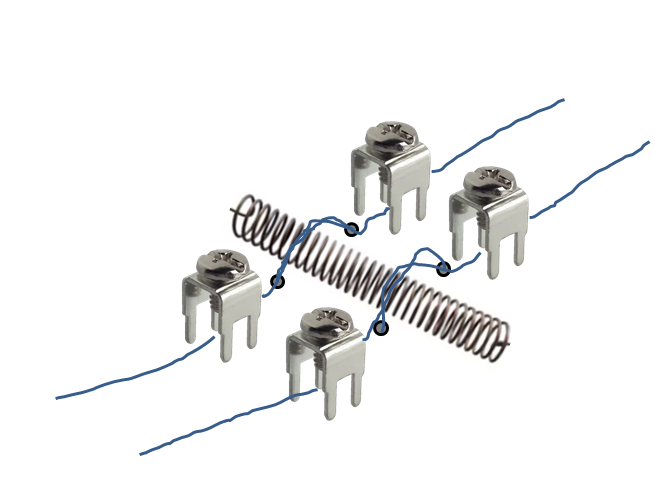
10 November 2024 4:58pm
I've been trying to find something off the shelf along those lines @Rob_Appleby
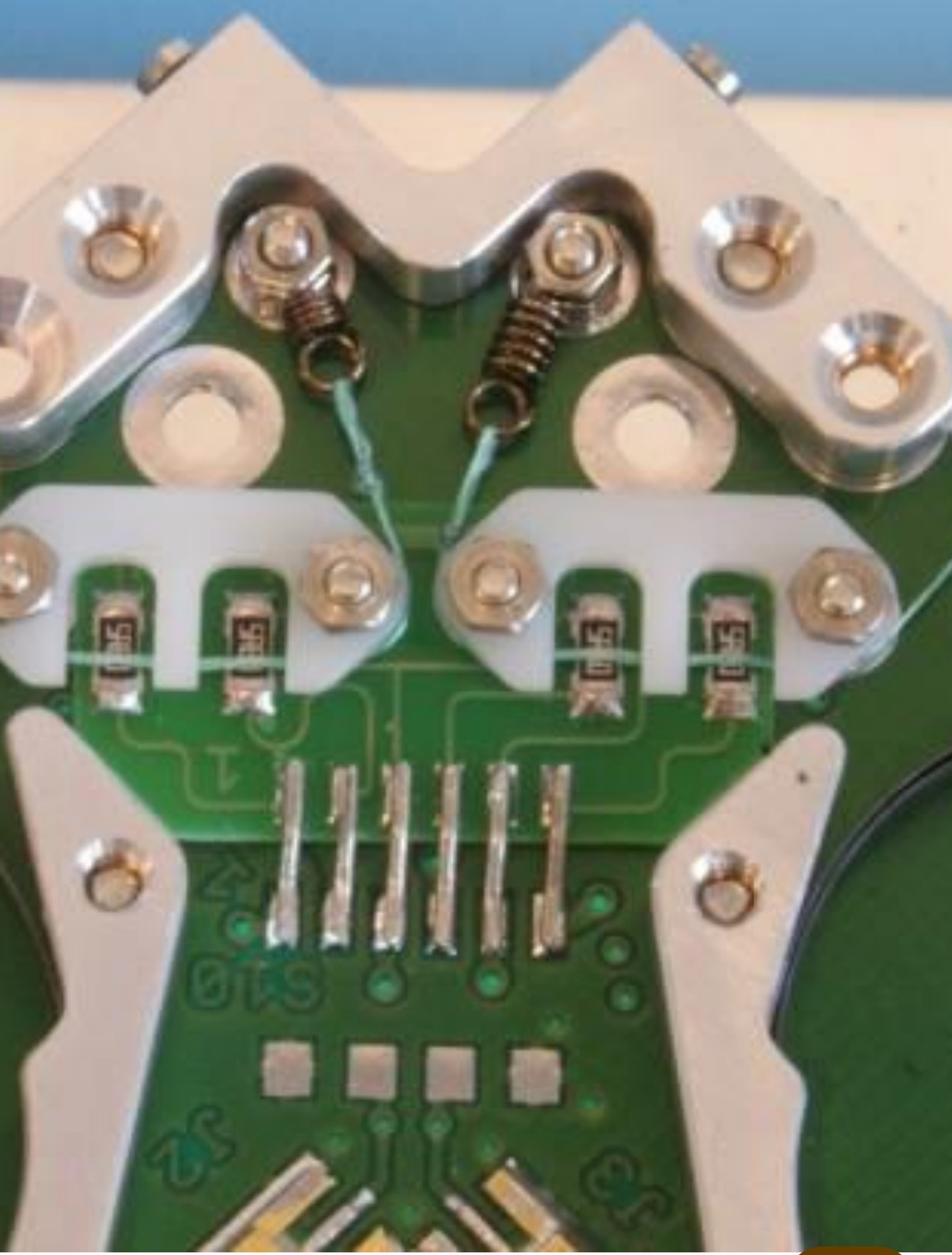
This is a cubesat example that's neat but not really meant to withstand the load an animal would put on it.
Seems like most tensioning examples out there are custom made but I'm convinced it can be done with off the shelf parts.
Regarding worries of damaging the line you can use ptfe tube or polyester/fep heatshrink for added abrasion resistance.
10 November 2024 9:00pm
The PCB mount terminals are actually quite robust and paired with a lock washer and something that would better secure the nylon (e.g., a piece of flat grooved plastic to add compressive loads across the string and not pinch it), I think it would work nicely.
As a separate idea, I just designed a circuit with SMD threaded standoffs, which I am going to secure in plastic and screw onto aluminum pieces that I'll be testing the ElectRelease with once it delivers. The standoffs are mounted on a circuit board, giving a 50V differential with a single-cell LiPo, hopefully releasing the epoxied aluminum plates.
Can wireless charging technology be used for animal sensors?
17 October 2024 7:03am
23 October 2024 3:43pm
The results in the paper you mentioned are really exciting technology. It can really do a lot of things.
Thanks for your reply!
23 October 2024 4:00pm
Although this technology may not be mature now, and there are still many problems to be discussed and solved, I think it will have good application prospects.
Unfortunately, I am just an undergraduate student in China, and what I can do is very limited. Maybe in the future I can also do some similar research or what I want to do. Just like you, I am studying hard now.
Thank you very much for this forum and the professionals who responded to me. You have allowed me to see more perspectives and many things I didn't realize. Thank you very much!
28 October 2024 3:13pm
No problem at all Yu (@JY) and good luck with your studies! Happy to discuss this and any other ideas any time.
All the best,
Rob
MS and PhD Opportunities in Ocean Engineering and Oceanography
6 October 2024 9:44am
Quality Assurance Lead for FieldKit
25 September 2024 5:29pm
Design-led innovation for nature
20 September 2024 2:24pm
CORDAP opens call for innovative projects (<$1.5M) on coral conservation and restoration
26 August 2024 6:01pm
WILDLABS Virtual Meetup: Bioacoustics Data Analysis and AI
22 August 2024 7:22pm
WILDLABS Virtual Meetup: Bioacoustics Data Networks and Platforms
22 August 2024 5:45pm
WILDLABS Virtual Meetup: Bioacoustics Hardware Innovation
22 August 2024 5:25pm
Community Choice Award Winners: 2024 #Tech4Wildlife Photo Challenge
15 August 2024 2:41am
Cast your vote in the #Tech4Wildlife Photo Challenge Community Choice Awards!
12 August 2024 1:46pm
12 August 2024 9:15pm
13 August 2024 11:26am
Move BON Development: Follow up discussion
19 June 2024 12:02pm
11 July 2024 10:14pm
You can catch up on the recording at that same link to the June Variety Hour! Lacey's fabulous talk starts around the 9:40 mark :)
12 July 2024 5:38am
Hi Talia!
I feel like the topic is so broad that it might help to put some constraints around things, see what works, and then broaden those out. I have a lot of ideas regarding the data monitoring and collection side based on the other sensor and observation networks we've set up in the past.
There may also be some potential scope to incorporate things like data collection and integrated monitoring to the Build Your Own Datalogger series where the system is updated to feed data into the observation network.
It'd probably take a bit of discussion and coordination. Let me know if interested. I'm fine to jump on a call or discuss via email too.
22 July 2024 9:24pm
@cmwainaina please take a look
19th Australasian Vertebrate Pest Conference 2024
12 July 2024 12:42am
Game-changing Bat Detectors to Hit Global Market
2 July 2024 1:18pm
Global trials for "Reefie" the coral reef inspector
30 June 2024 12:52pm
Case Study: Drone-based radio-tracking of Eastern Bandicoots
14 June 2024 3:53am
Postdoctoral Research Associate: Bioacoustics & population modeling
11 June 2024 9:35pm
Fully funded PhD in AI biodiversity monitoring
11 June 2024 1:07pm
New WILDLABS Funding & Finance group
5 June 2024 3:24pm
5 June 2024 4:14pm
6 June 2024 1:38am
6 June 2024 4:16am
Apply! 2024 Conservation Tech Award
3 June 2024 3:51pm
Share Your Work in a Conservation Technology Video
17 May 2024 9:06pm
CollarID: multimodal wearable sensor system for wild and domesticated dogs
3 May 2024 1:42am
3 May 2024 10:14am
Hi Patrick,
This is so cool, thanks for sharing! It's also a perfect example of what we were hoping to capture in the R&D section of the inventory - I've created a new entry for #CollarID so it's discoverable and so we can track how it evolves across any mentions in different posts/discussions that come up on WILDLABS. This thread appears on the listing, and I'll make you three the contacts for it too. But please do go in and update any of the info there as well!
Steph
3 May 2024 2:01pm
Hi Steph,
We appreciate the support! Thanks for the tag and your help managing the community!
Patrick
WILDLABS AWARDS 2024 - Underwater Passive Acoustic Monitoring (UPAM) for threatened Andean water frogs
30 March 2024 3:54pm
5 April 2024 12:13pm
Congratulations, very exciting! Keep us updated!
7 April 2024 6:09pm
This is so cool @Mauricio_Akmentins - congrats and look forward to seeing your project evolve!
1 May 2024 5:17pm
Congratulations! My first hydromoth was just arrived yesterday and so excited! Looking forward for the update from your project!!!
The Inventory User Guide
1 May 2024 12:46pm












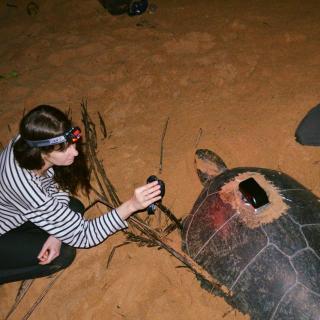























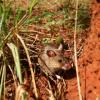






















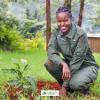


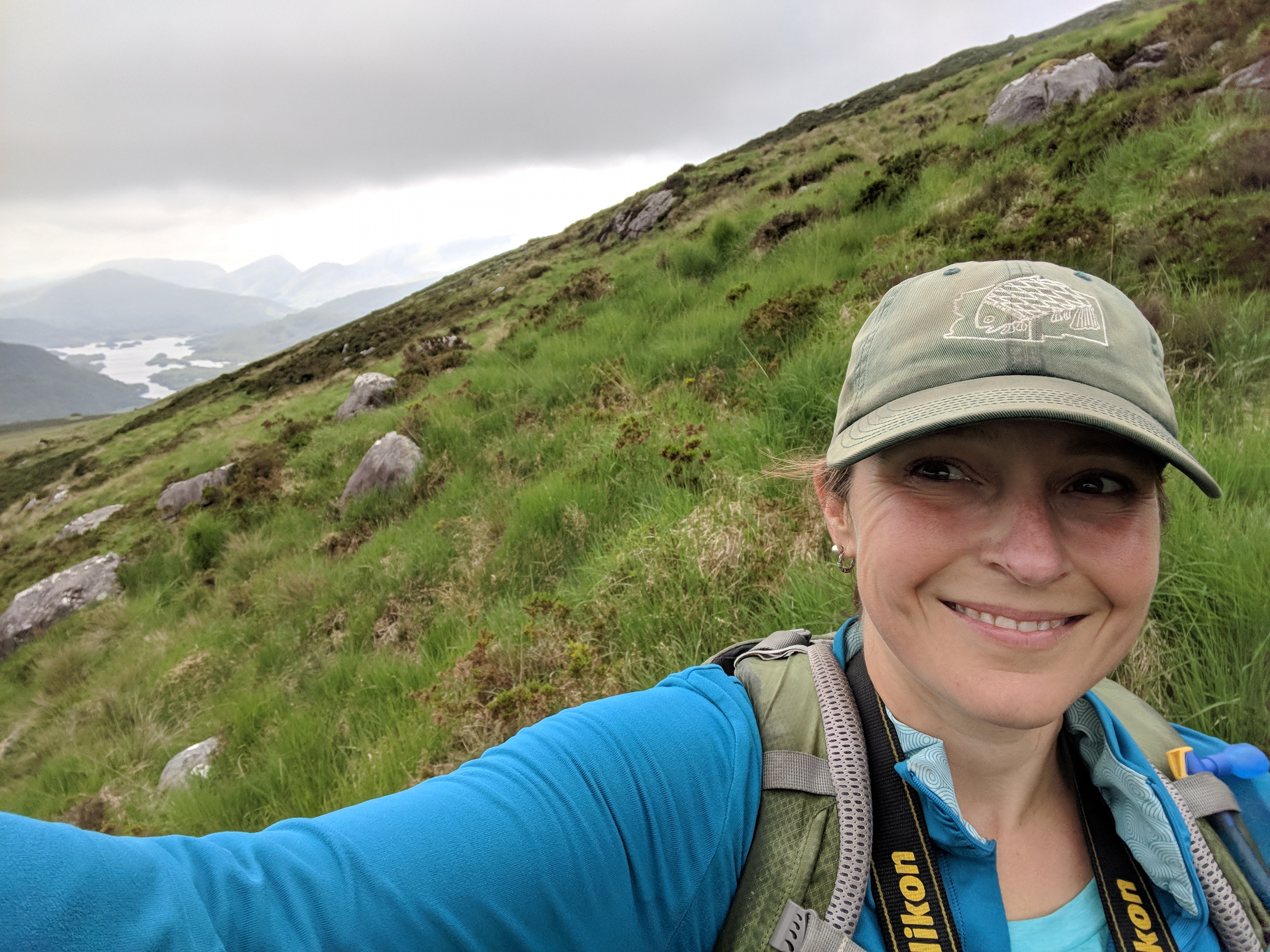







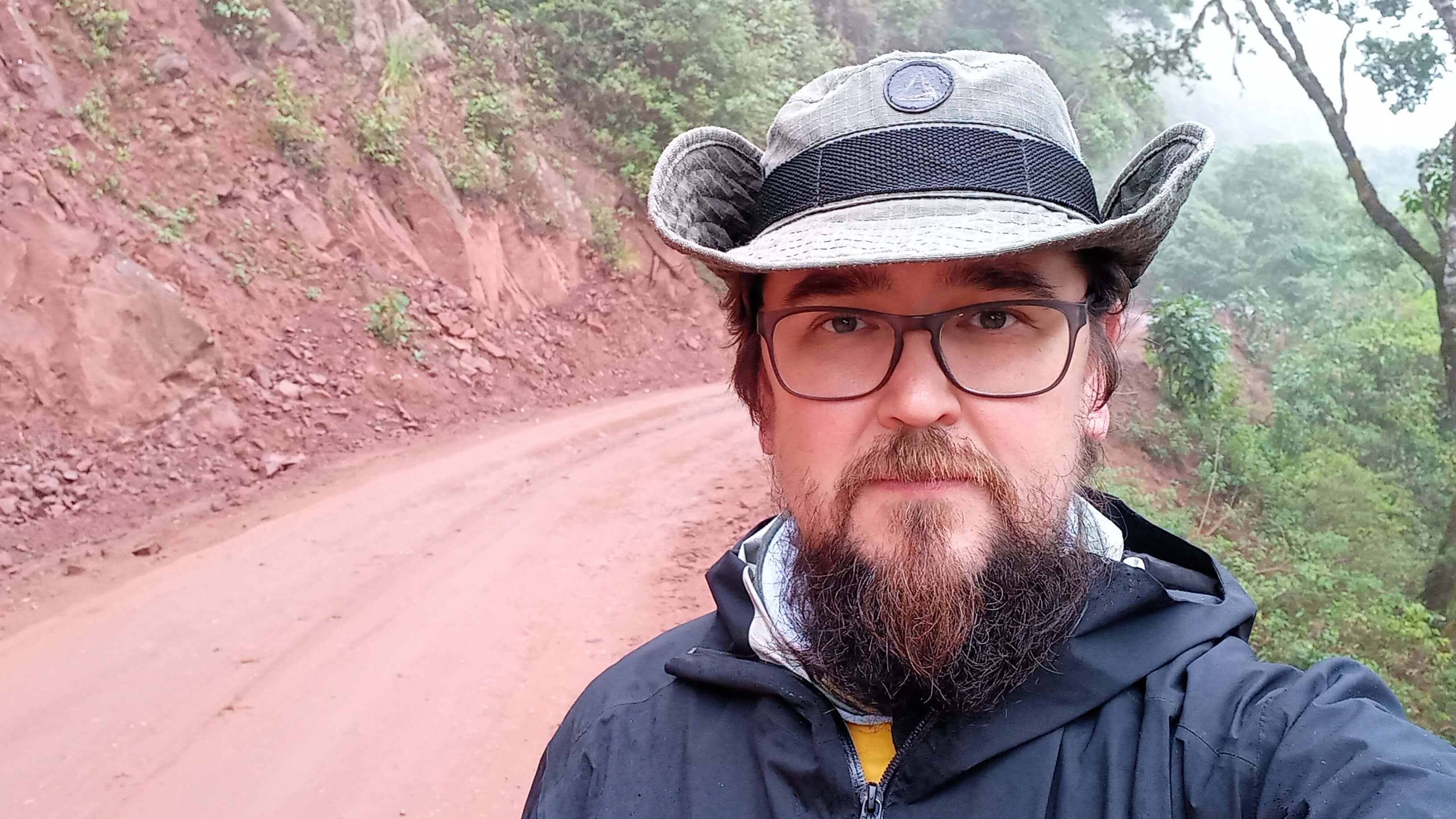

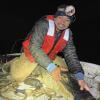

4 December 2024 4:21pm
@ioanF , you can do a little bit better than 10 ma. I have here an adalogger rp2040 feather with DS3231 RTC wing and a I2S Mems microphone. During "dormant" mode running from xosc and waiting for DS3231 wakeup I get 4.7 ma . This includes about 1 ma for microphone and DS323 together. OK, that is still 3 ma higher than 0.7 ma RP2040 documentation is said to claim. I guess, there is some uncertainty with the AT35 USB tester I'm using. Putting the LDO enable pin (EN) to ground, the USB tester said 1 ma, which may be dominated by the offset of the tester as the LIPO charger as remaining component should only consume 0.2 ma (max).
Edit (for the records): After 'disabling' all GPIO but the RTC wakeup pin, the system (RP2040+DS3231 RTC+ I2S Mems microphone) consumes only 1.8 mA. I guess I`m now close to the clamed dormant power consumption!